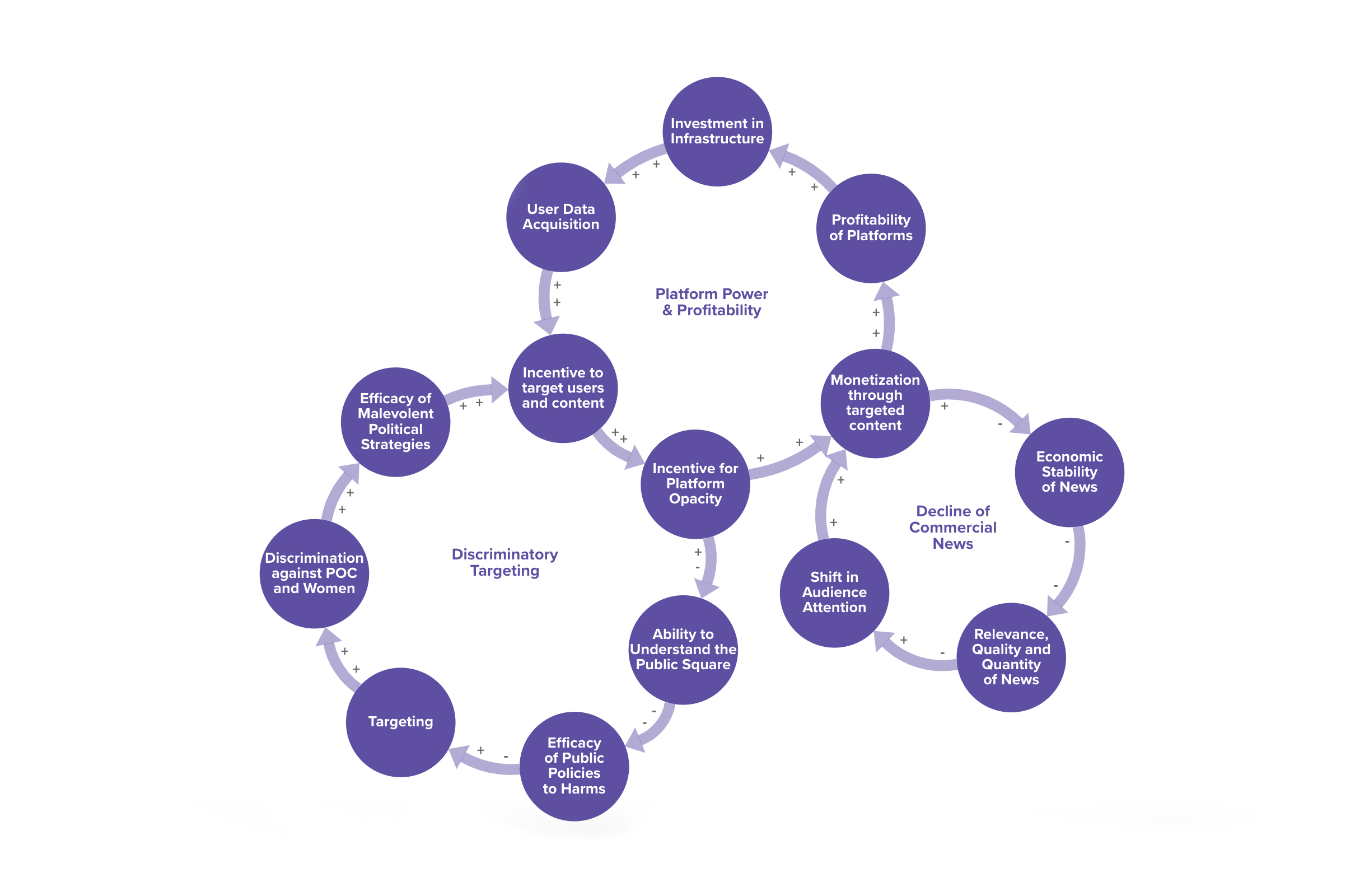Efforts in journalism to support diversity, equity, and inclusion (DEI) over the past decade have been ineffective in creating dynamic change in the stories, sources, and staff of news outlets in the United States.
Clearly, the dramatic financial downturn in newspaper advertising revenue has placed strain on all legacy journalism organizations. However, those dynamics alone do not explain the persistent gap in employment opportunities between minorities and their white counterparts seeking jobs in journalism following college graduation. Or excuse the historic leadership failure of large and profitable outlets to fulfill their promise to diversify their ranks, which has an outsized impact on communities of color given the dearth of opportunity at smaller newsrooms.
The purpose of this report is to begin to understand philanthropic interventions supporting diversity, equity, and inclusion in journalism from 2009 – 2015. As a foundation new to DEI funding in journalism, which has not made any grants in this area during the period under consideration, we plan to use this report to identify major funders and recipients of institutional grants.
This report represents our first attempt to get at this information using data from Foundation Maps for Media Funding, created by the Foundation Center for Media Impact Funders. We are aware of the many limits of this data set due to self-reporting and challenges in categorization. Even with those challenges we are proud of the work that Katie Donnelly and Jessica Clark at Dot Connector Studio have done so far to illuminate larger trends and we plan to use this report as a launchpad into further analysis of the organizations supporting diversity, equity, and inclusion in journalism.
We are already getting started. We are partnering with funders including the Knight Foundation and Open Society Foundations to support data training from the Ida B. Wells Society; News Integrity Initiative and Gates Foundation in leadership training from the Maynard Institute; Ford Foundation to support the National Association of Black Journalists; Google News Initiative with the revamp of the ASNE Diversity survey led by Dr. Meredith Clark; Nathan Cummings in support of DEI initiatives at CUNY; MacArthur and McCormick Foundations with new approaches in Chicago like City Bureau and the Obsidian Collection; and Heising-Simons Foundation in paid internship with the Emma Bowen Foundation.
At Democracy Fund, our approach to journalism is focused on building trust and engagement. We break our Engaged Journalism Strategy into three tracks focused on (I) Audience-Driven Storytelling, (II) Diversity, Equity, and Inclusion, and (III) promoting Transparency.
Through our Audience-Driven Storytelling work we invest in innovations and projects that support journalists in reorienting their work towards a focus on the concerns of their audience. This involves building inclusion into newsroom practices, supporting universities as teaching hospitals for innovation, creating communities of practice around engagement, and developing new practices, people, and products hard-wired for engagement.
Our Diversity, Equity, and Inclusion work focuses on improving the diversity of sources, stories, and staff in news outlets. This work involves creating an inclusive environment at news outlets; recruiting, retaining, and promoting diverse staff, including leadership; and working to develop and sustain minority ownership of media properties.
In our Transparency work, we seek to help news outlets and the public better understand one another. We are committed to supporting innovations in engaged journalism through grantmaking, partnerships, and collaboration to strengthen the Fourth Estate and the democratic principles on which our nation is founded. This report is part of that commitment. We will continue to seek opportunities to collaborate with news outlets, journalism support organizations, and partner funders to achieve this goal.



